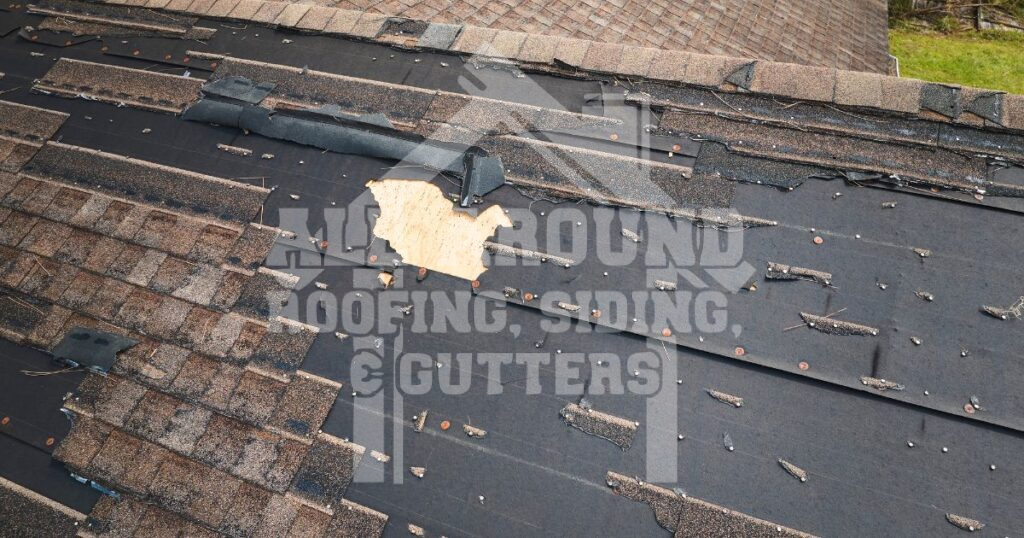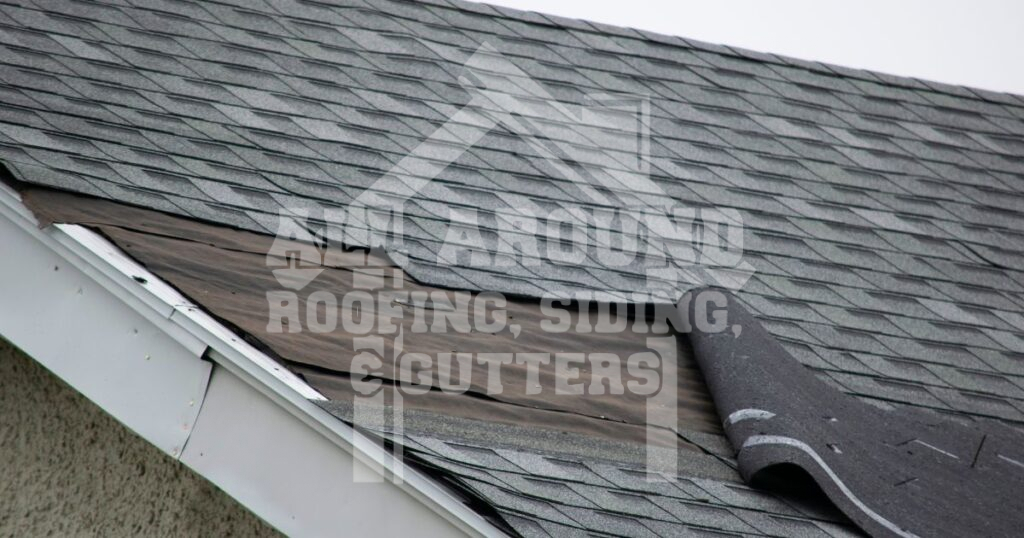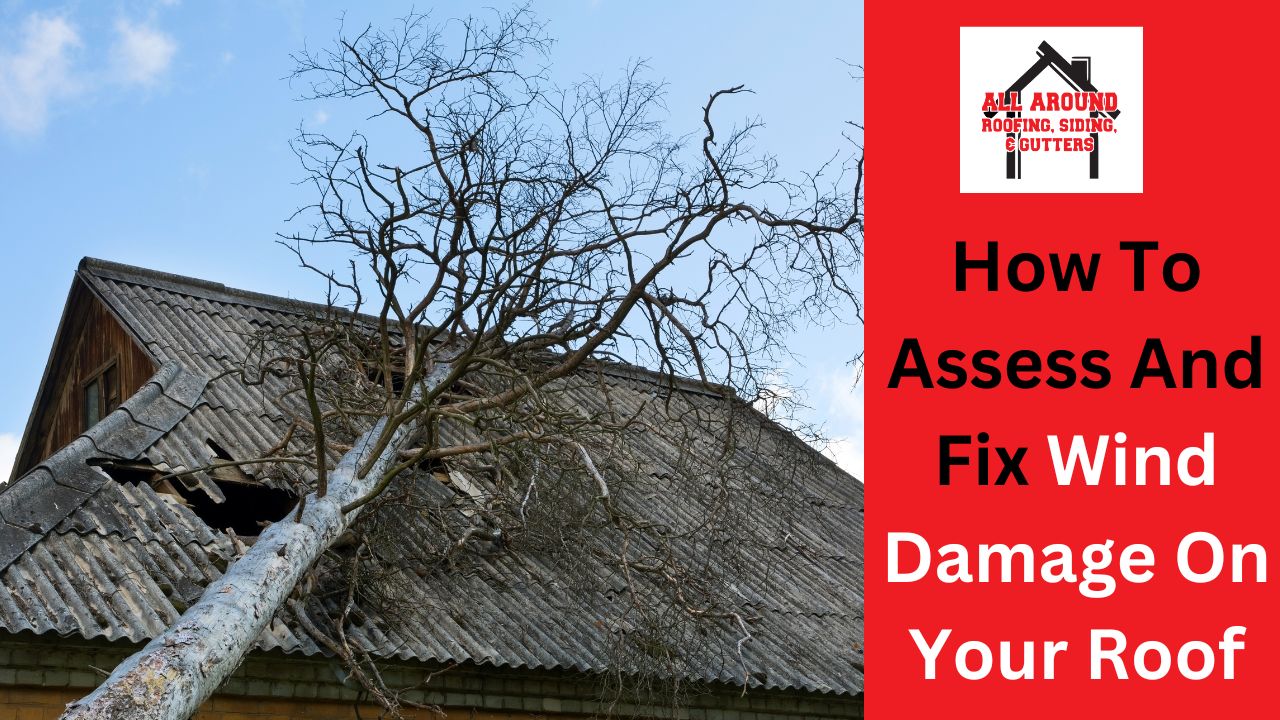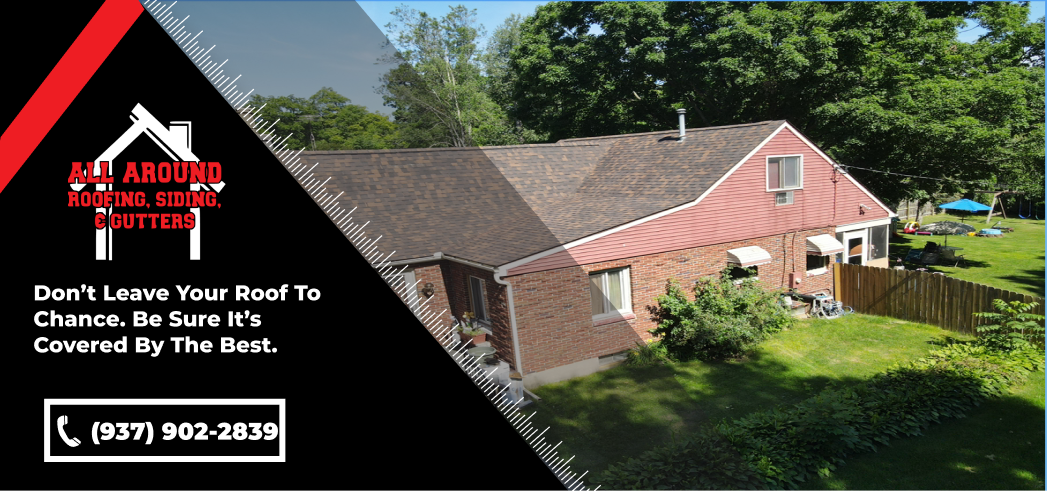The ability of our homes to withstand bad weather is put to the test frequently, especially when strong winds blow through. As the first line of defense, your roof is at risk of damage that, if ignored, could result in more serious issues.
In this blog post, we’ll go over the essential steps you should take to evaluate and repair wind damage in order to protect the longevity and security of your home.
How Fast Does Wind Need To Be To Damage A Roof?
Different wind speeds can harm roofs in various ways:
- 45 – 57 mph: Slight damage can start, but is considered non-severe. Tree branches may break, and weakened roofs may become more damaged.
- 58 – 74 mph: Severe wind causes significant damage. Landscaping, trees, shingles, and chimneys may be affected.
- 75+ mph: Widespread damage occurs, uprooting trees, flipping mobile homes, and causing significant roof damage to buildings and homes.
What Does Wind Damage Look Like On A Roof?
While areas like Dayton, Ohio, do not typically need to worry about wind-driven disasters like hurricanes or tornadoes, roofs are still very vulnerable to high wind gusts. Let’s take a closer look at the way in which a roof can experience wind damage:
#1. Loose Or Missing Shingles:

After a bout of strong winds, it’s not uncommon for shingles on a roof to either loosen or be completely blown off. This poses a significant threat, as it exposes the roof to potential water damage and other structural issues. If you notice gaps or find shingles on the ground, it’s a clear indication that your roof requires immediate attention.
#2. Debris Damage:
High winds can cause debris to be airborne and damage your home. This debris can crack or fracture shingles, making them vulnerable to water infiltration, and in severe cases larger debris such as tree branches or flying objects can puncture the roof, leading to visible holes and structural damage. It’s essential to promptly address any debris damage to your roof, as it can compromise its integrity and potentially lead to leaks and further issues if left unattended.
#3. Curling Or Peeling Shingles:

The force exerted by the strong winds can cause shingles to curl up around the edge, making them vulnerable to additional damage and compromising the overall integrity of the roof. Curled shingles expose the layers beneath, leaving them susceptible to water infiltration.
#4. Granule Loss:
Wind can strip away the granules on shingles, a protective layer crucial for shielding the roof from the elements. Granule loss weakens the shingles and reduces their effectiveness at preserving the roof’s integrity. Keep an eye out for bare patches on your shingles, as addressing this issue early can help prevent accelerated wear and tear.
#5. Damaged Soffit Or Fascia:
High winds can result in damage to the soffit and fascia, impacting the overall stability and protection of the roof structure. Beyond affecting the roof’s appearance, damaged soffit and fascia exposes gaps in the roofline to potential water damage. The fascia also holds up your gutters, so if it’s damaged your gutter system may be compromised, reducing its ability to channel water away from your home.
#6. Tears In Flat Roofing Membranes:
If roofing membranes are not installed correctly, or are already old and damaged, high winds may only make the damage worse by making small punctures or holes in the material larger. Flat roofs require specialized attention, and any tears or punctures should be repaired promptly to avoid water infiltration and potential structural damage.
#7. Broken Or Shattered Tiles:
When it comes to tile roofs, wind damage can cause tiles to break off or shatter, indicating the need for repairs to maintain the roof’s integrity. Cracked or broken tiles not only compromise the roof’s functionality but also affect its aesthetic appeal, and pieces of tile that have broken off may become debris that further damages the rest of the roof.
A Step-by-Step Assessment Process
After wind damage occurs you want to be able to assess your roof promptly for damage in order to determine whether you need professional repairs or a replacement. While hiring a professional is the best option for an inspection, here is a step-by-step process you can use to assess and handle wind damage yourself:
#1. Safety First:
Before delving into the inspection process, prioritize your safety. It is really important to wear appropriate protective gear and exercise caution, especially concerning potential hazards like electrical issues or unstable structures. Ensuring your well-being sets the foundation for a secure assessment of any roof damage that may have occurred due to strong winds.
#2. Assess And Document The Damage:
Systematically inspect the roof for signs of damage inflicted by the wind. Look for missing or loose tiles, shingles, or any other visible issues. A thorough examination of the roof’s surface is essential to identify specific problems and plan effective repairs that will uphold the roof’s integrity.
A key step in the aftermath of wind damage is to document it thoroughly. Take photographs of the damage, providing clear visual evidence. This documentation is not just for your records, but also plays a crucial role when dealing with insurance claims. These images can be helpful in demonstrating the extent of the damage for a smoother claims process.
#3. Examine The Ceilings:
Look inside your home and examine the ceilings for any telltale signs of water damage. Water spots that cause yellow, copper, or brown discoloration could indicate leaks. Identifying these interior signs of damage is key to understanding the scope of the problem and planning necessary repairs to the roof’s structure.
#4. Look For Debris:
Search for any debris that may have landed on the roof, such as tree branches or items from neighboring homes. Clearing away debris is essential not only for a comprehensive assessment of the damage, but also to prevent further complications that could arise from obstructions on the roof.
#5. Inspect The Gutters:
Turn your attention to the gutter system and examine it for potential issues. Check for water buildup caused by debris, or that fasteners holding the gutters haven’t been loosened or torn away. Addressing gutter-related problems is critical to preventing secondary issues that could compromise the entire roofing system.
#6. Temporary Repairs:
In cases where immediate action is required, consider making temporary repairs. Cover exposed areas with tarps or plastic to prevent further water intrusion. These temporary fixes can act as a protective measure until more permanent repairs can be implemented, minimizing the risk of additional damage.
Some roofing contractors even provide emergency tarping services, so learn about the offerings in your area so you have someone on hand to call for this step.
#7. Contact Your Insurance Company:
Promptly report the damage to your insurance company and initiate the claims process. Informing your insurer in a timely manner is crucial for a swift claims process and reimbursement for the necessary repairs to restore your roof.
#8. Hire a Professional Roofer:
Get the help of a qualified roofing contractor to carry out an assessment of the damage. A specialist can offer you a thorough estimate for replacement or repair and can also walk you through the best options for keeping the structural strength of your roof intact.
Does Homeowners Insurance Cover Wind Damage To A Roof?
Homeowners’ insurance usually covers wind damage to a roof, including issues caused by storms, like damaged and broken tiles, or even tree damage. This coverage typically extends to various weather-related damage to your roof such as hail, wind, rain, snow, or ice, depending on your plan.
However, it’s crucial to understand that insurance generally doesn’t cover damage resulting from wear and tear. Some policies might only cover roof damage if it’s accidental and not, possibly requiring an additional accidental damage clause. Also keep in mind that coverage for wind and hail damage may be limited to “actual cash value” if the roof is deemed too old for full replacement.
Need Roof Repair Or An Inspection After Wind Damage? We’re The Team For You
Ensuring the safety of your property and family involves promptly assessing and addressing wind damage on your roof. To ensure that all the damage is addressed and the proper repairs are made, you’ll want to call a professional team like the one at All Around Roofing, Siding & Gutters.
Whether you require full replacement or minor repairs in Dayton, Ohio, our team of experts are ready to assist you. We are capable of handling all of your roofing needs, regardless if it’s a residential or commercial roof. So give us a call today at (937) 249-1416, and find out how we can help you.


